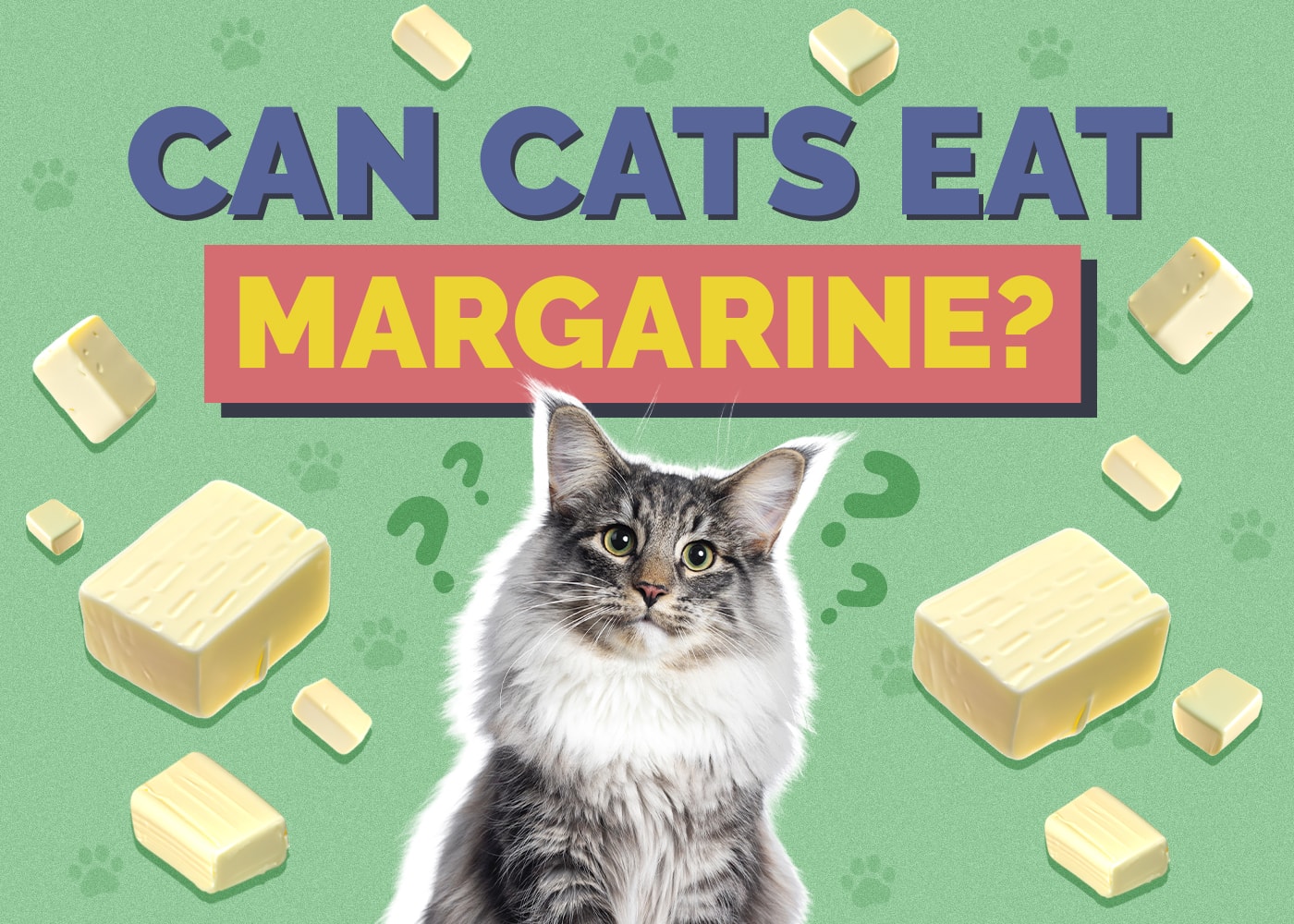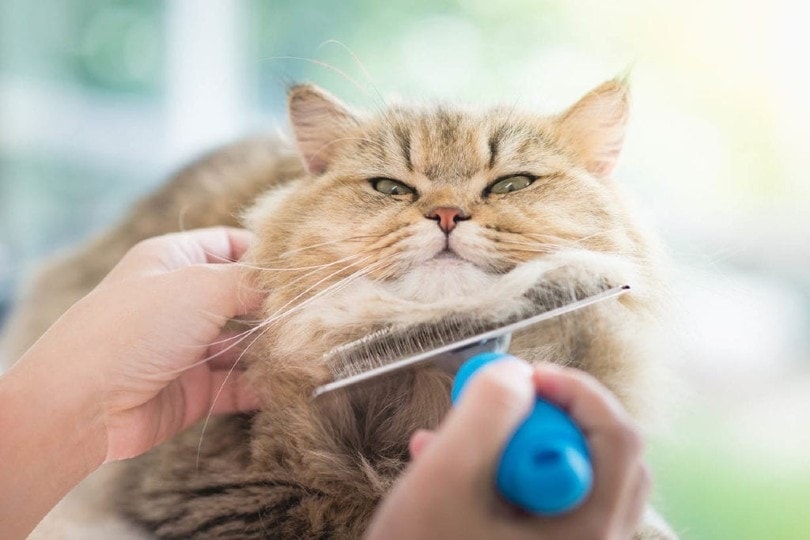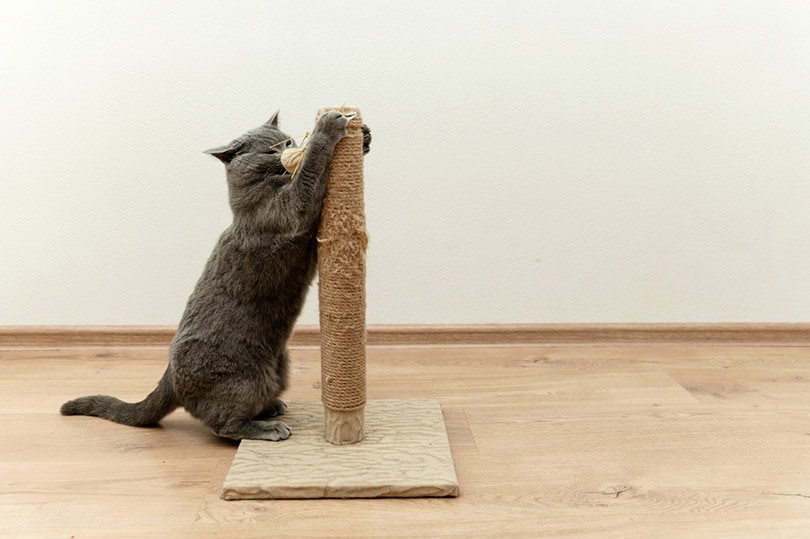11 Surprising Tortoiseshell Cat Facts: Appearance, Origin & Behaviors

By Misty Layne
Updated on
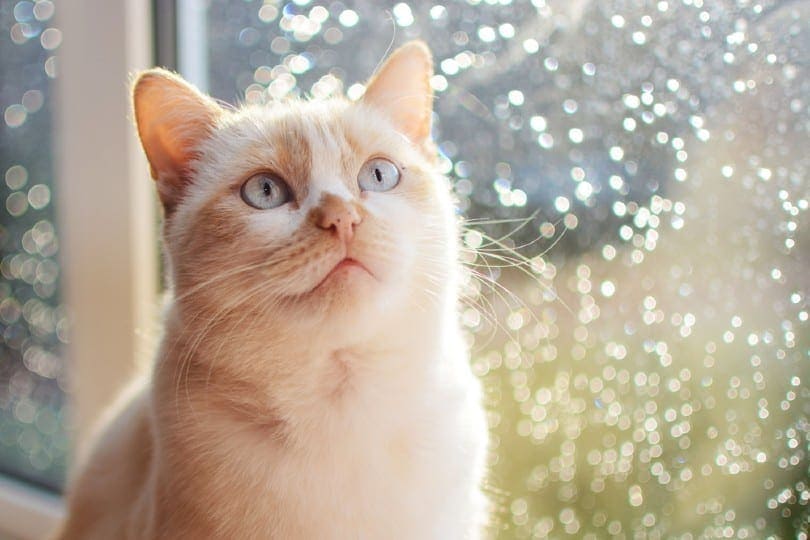
Tortoiseshell (or tortie) cats are truly unique among felines. These multi-colored kitties are known for being sassy and independent (though this doesn’t stop them from being affectionate and loyal!). But how much do you really know about tortoiseshell cats?
We’re here to up your knowledge of these felines with 11 surprising tortoiseshell cat facts. Check them out below to learn more about these beautiful cats!
Top 11 Facts About Tortoiseshell Cats
1. Tortoiseshell Isn’t a Breed
Some mistakenly believe that the tortoiseshell is its own cat breed, like a Siamese or Ragdoll, but it is not! The name “tortoiseshell” is merely a reference to the marking on these kitties’ coats that resemble a tortoiseshell. A tortoiseshell cat can be one of several breeds, like the Persian or Maine Coon, or even a mix of breeds. But tortoiseshells are not a specific breed all their own.
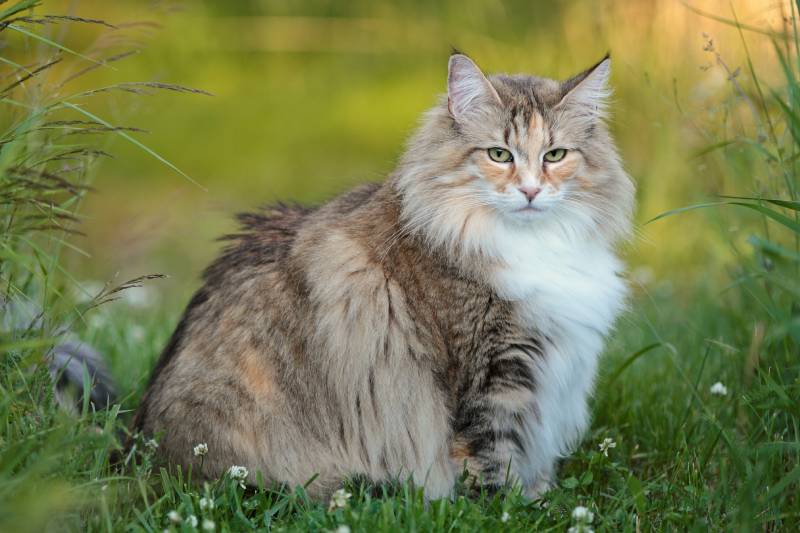
2. Tortoiseshells Are Typically Female
Did you know that 99.9% of all tortoiseshell cats are female? The unique coloring of these felines is linked to the X chromosome, and females have two X chromosomes, so they are most likely to achieve the tortoiseshell markings. Only 1 out of 3,000 torties is male since they only have a single X chromosome1. Unfortunately, when a male tortoiseshell does occur, the cat is almost always sterile and tends to have many health issues, as they end up having two X chromosomes and one Y chromosome, which is a genetic abnormality.
3. Tortoiseshell Cats Can Be Chimeras or Mosaics
The coloring of a tortie’s coat can be either chimera or mosaic, but in most cases, it will be mosaic. A mosaic coat is simply one where a cat has the traditional colors of a tortoiseshell randomly mixed together. But a chimera coat is what it’s called when a tortoiseshell has the standard colors, but one side of the body is a different color than the other. You’ve probably seen pictures of cats where half the face is orange and the other half black; that’s chimera!
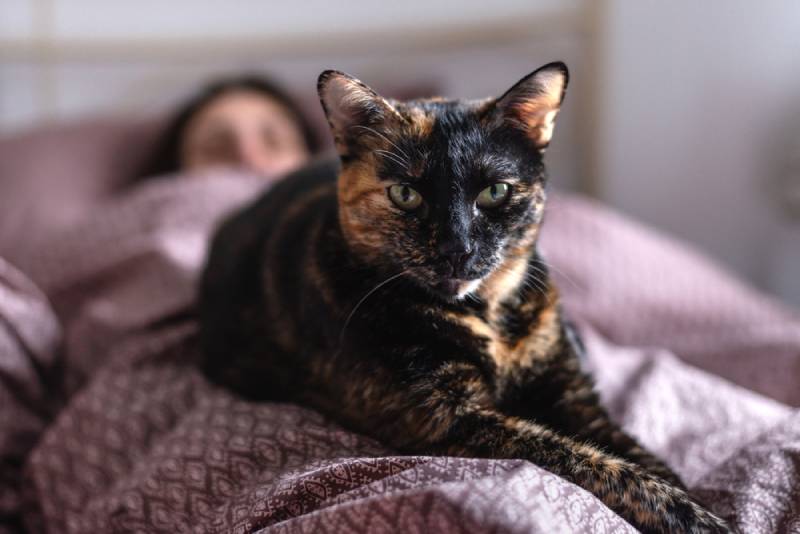
4. They Can Also Be Patched or Bridled
A tortoiseshell’s coat isn’t only mosaic or chimera, though; it can also be patched or bridled! If the colors on the cat occur in large sections over the body (like patchwork), then the coat is patched. But if a cat’s coat has colors that look like they’re woven together, then the coat is bridled.
5. A Tortoiseshell Can Be a Torbie
You’ve heard of the tortie, but have you heard of the torbie? What is a torbie? It’s the tortoiseshell coloring mixed with the stripes of a tabby (hence the name “torbie”). These felines are unique and often have markings on their head and legs. Their coats also include plenty of variation and color.
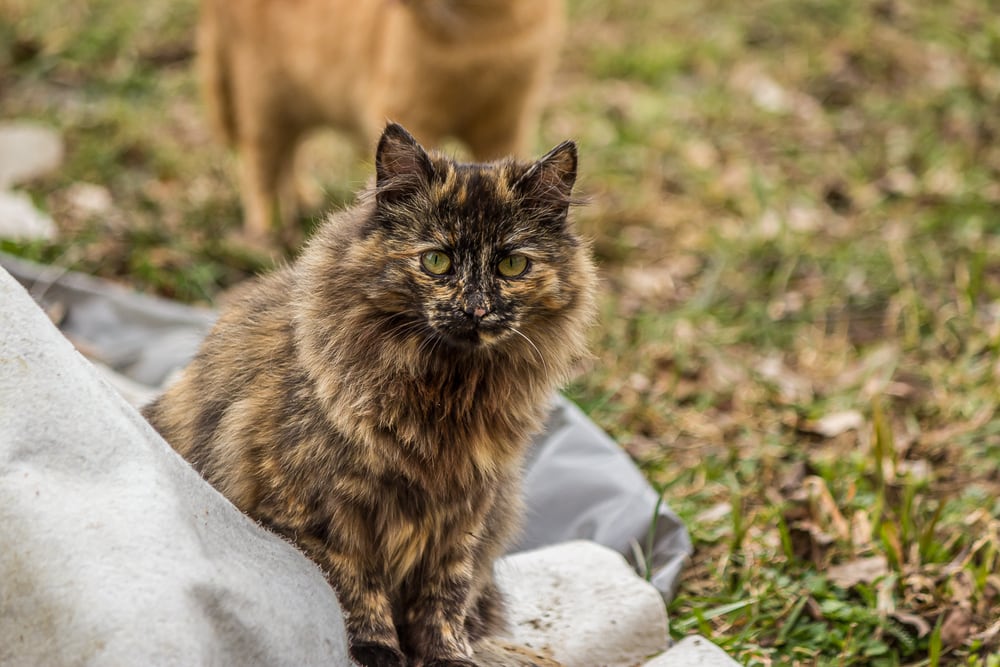
6. Tortoiseshells Have Many Myths Surrounding Them
Tortoiseshell cats are one-of-a-kind, so it makes sense that there are tons of myths and lore surrounding them. In many places, these felines are considered good luck. Torties in Ireland are thought to bring good fortune. Lore in England holds that rubbing the tail of a male tortoiseshell during the month of May can heal warts. Some cultures even believe that dreaming of a tortie means you’ll have good luck with love. In Japan, these kitties are believed to protect ships from ghosts, shipwrecks, and storms!
7. Tortitude—Real or Myth?
If you know anything about torties, you’ve probably heard talk of “tortitude” or the idea that these felines are feistier, louder, and more high-strung than other cats. But is that actually true?
A study done in 2015 looked at whether the color of a cat’s coat was linked to their behavior, with a focus on the tortie. They spoke to 1,200 cat parents to find out which felines were more aggressive while being handled, at the vet, and just in everyday life. Though tortoiseshell cats were among those reported to have more aggressive interactions, the researchers, upon further analysis, found little difference in the levels of aggression cats of any color exhibited.
Essentially, the result was that the color of a feline’s coat might tie into their behavior, but far more research would need to be done. So, “tortitude” may not be accurate!
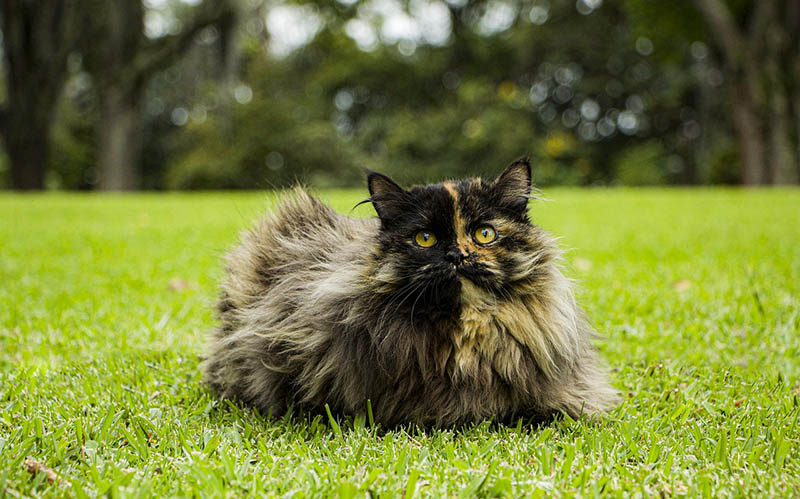
8. These Felines Are Referred to as “Money Cats” in the U.S.
We said before that tortoiseshell cats are thought to bring all kinds of good luck to people, and in the United States, these felines are sometimes referred to as “money cats”? Why money cats? Because these kitties are thought to bring wealth! This could be just one reason these cats are highly sought after.
9. There Are Plenty of Famous Tortoiseshells
There have been plenty of famous tortoiseshell cats throughout history! Edgar Allan Poe is said to have loved these felines and even had one named Cattarina. In Japan, a tortoiseshell cat named Tama was the station master at Kishi Station; she got paid in cat food to meet and greet the passengers! And Ronald Reagan had a pair of tortoiseshell cats named Sarah and Cleo. Torties definitely have been well-loved throughout the years!
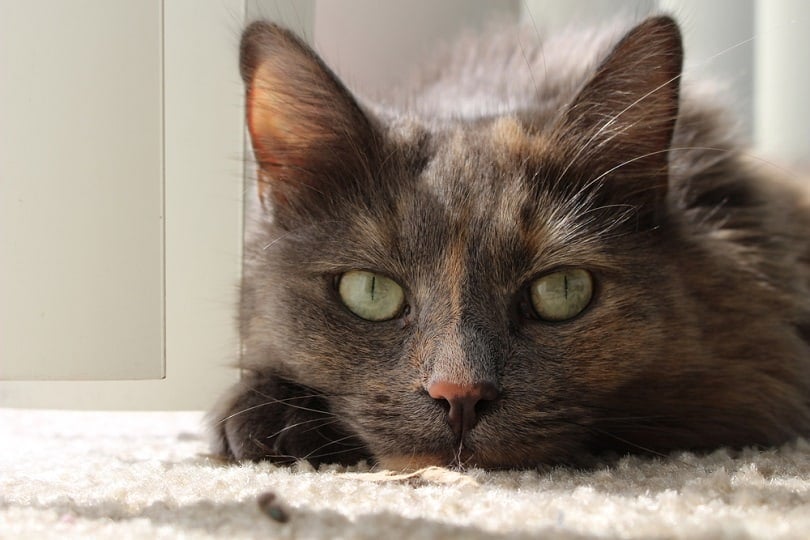
10. They Can Live a Long Time
This doesn’t apply to every tortoiseshell, of course; these cats are all different breeds, so their lifespans vary. However, one tortoiseshell from Australia, named Marzipan, lived till the age of 21, which is incredibly old for a feline! She was originally a stray but was eventually adopted into residence at the Astor Theatre. There, she attended movies and snuggled up with moviegoers. She also became quite well-known in the art-deco scene.
11. Their Name Comes From Their Coat
These cats were named after their coats, which resemble actual tortoiseshells. Tortoiseshell used to be used to create everything from eyeglasses to jewelry before the 1970s, so people recognized that the torties coat looked much like that, and the name was born. Eventually, the use of tortoiseshells became banned due to tortoise populations becoming decimated throughout the world!
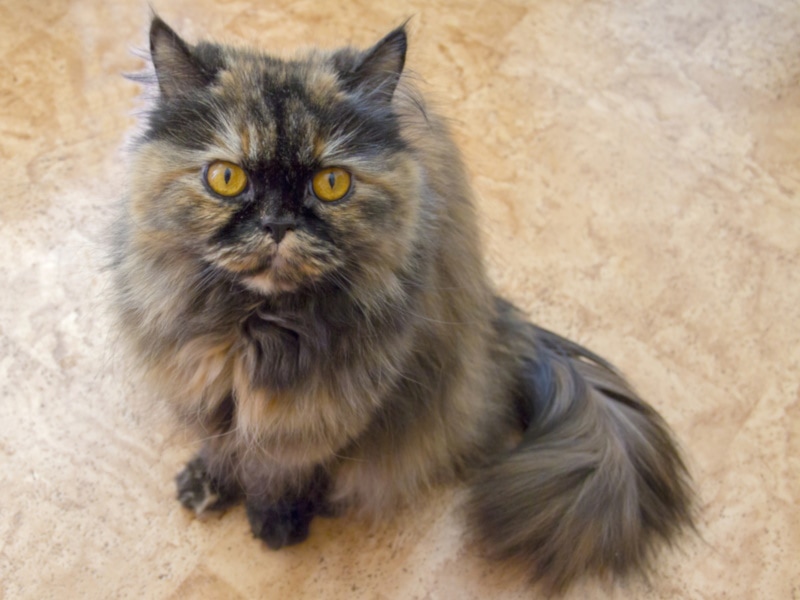
Conclusion
There you have it—11 surprising tortoiseshell cat facts! While you may have known a few of the facts on this list, there were probably also a few you didn’t know. Hopefully, you’ve learned something new and can now go and impress everyone you know with your newfound knowledge.
Featured Image Credit: Laralou Photography, Shutterstock

